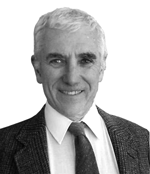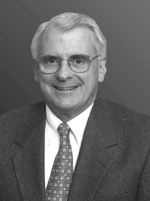Committee Meetings
Workshops
Keynote Speaker
Plenary
Session & Presidential
Address
Technical
Sessions
Committee Meetings
Volunteer Activities
Exhibitor
Listing
Exhibitor
Directory
Presenter
Index
Hotel
Floor Plan
Egan
Center Floor Plan
Registration
Information
Registration
form
|
Plenary Session & Presidential Address Wednesday, May 7th, 10:15 am to 11:15 am |
| Craig Dorman Dorman attended Dartmouth College on a Naval ROTC scholarship, receiving his BA in Geography (summa cum laude; Senior Fellow) and commission as Ensign, USN, in 1962. While in naval service, he received his MS and PhD in Oceanography, respectively at the Naval Postgraduate School (1969) and the Massachusetts Institute of Technology- Woods Hole Oceanographic Institution (MIT/WHOI) joint program (1972). Following tours as a SEAL in Vietnam and asCommanding Officer of UDT ELEVEN, he was assigned to the staff of the Chief of Naval Operations in Washington, D. C., in 1977. He retired from the Navy in the rank of Rear Admiral in February 1989, to accept the position of Director of Woods Hole Oceanographic Institution, Woods Hole, Massachusetts. Dr. Donald T. Lauer,
Lauer joined to the USGS’s EROS Data Center in 1974. He led the remote sensing training program in his early years at EROS and then headed the science program until 1992. In December 1992, he was named Center chief. Prior to joining the USGS, he was a research scientist at the University of California, Berkeley where he specialized in developing and applying image analysis techniques for inventorying and monitoring Earth resources. In 1968, he was an instructor in the Geography Department, University of California, Davis where he taught Basic Principles of Photo Interpretation and Photogrammetry, and in 1969 he worked on vegetation and terrain analysis at Lockheed Electronics. Lauer joined the Society as a graduate student in 1966. He presented in 1968 his first paper at the Annual Convention. Lauer has subsequently authored or coauthored more than 100 technical reports and papers. He has served the Society as a contributing author to the Manual of Remote Sensing (1st and 2nd editions) and, for eight years, as correspondent to the ISPRS Commission VII: Interpretation of Data. He has been given three ASPRS President’s Citations for meritorious service and chaired the Steering Committee for the 1999 Pecora 14/ Land Satellite Information III Symposium. Lauer received his BS (forestry) and MS (forestry and remote sensing) from the University of California, Berkeley and his PhD (geography and remote sensing) from the University of California, Santa Barbara. He also received an Honorary PhD (Doctor of Science) from South Dakota State University. He has received the Department of the Interior’s Meritorious and Distinguished Service Awards and the Presidential Rank Award for Meritorious Executive. |

5410 Grosvenor Lane, Suite 210, Bethesda, Maryland 20814-2160
URL: http://www.asprs.org/
Last Update:

 Dr.
Craig Dorman joined the University of Alaska as vice president for
Research in March 2002. Prior to joining the University, Dorman
was a senior scientist at the Applied Research Laboratory of Pennsylvania
State University and the chief scientist at the Office of Naval
Research (ONR). As chief scientist, he provided overall leadership
and guidance for the health of the Navy’s science and technology
(S&T) program. Dorman advised the Chief of Naval Research and
the ONR S&T managers and program officers of global scientific
advances, trends and opportunities for initiatives of use to the
Navy and Marine Corps.
Dr.
Craig Dorman joined the University of Alaska as vice president for
Research in March 2002. Prior to joining the University, Dorman
was a senior scientist at the Applied Research Laboratory of Pennsylvania
State University and the chief scientist at the Office of Naval
Research (ONR). As chief scientist, he provided overall leadership
and guidance for the health of the Navy’s science and technology
(S&T) program. Dorman advised the Chief of Naval Research and
the ONR S&T managers and program officers of global scientific
advances, trends and opportunities for initiatives of use to the
Navy and Marine Corps. ASPRS
president-elect, retired from the United States Geological Survey
(USGS) on June 1, 2001 and is now a volunteer scientist emeritus.
His last assignment with USGS was chief of the Earth Resources Observation
Systems (EROS) Data Center in Sioux Falls, South Dakota. He was
responsible for a workforce of over 600 employees (government and
contractor) that preserves and safeguards the world’s largest
civilian archive of remotely sensed land data; ensures that scientists,
businesses and the public have ready access to this archive of land
information; and promotes new uses and new users of remotely sensed
and other types of geospatial data.
ASPRS
president-elect, retired from the United States Geological Survey
(USGS) on June 1, 2001 and is now a volunteer scientist emeritus.
His last assignment with USGS was chief of the Earth Resources Observation
Systems (EROS) Data Center in Sioux Falls, South Dakota. He was
responsible for a workforce of over 600 employees (government and
contractor) that preserves and safeguards the world’s largest
civilian archive of remotely sensed land data; ensures that scientists,
businesses and the public have ready access to this archive of land
information; and promotes new uses and new users of remotely sensed
and other types of geospatial data.